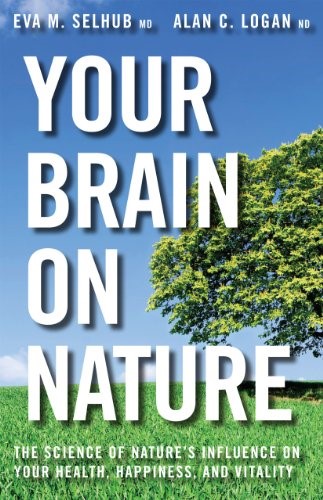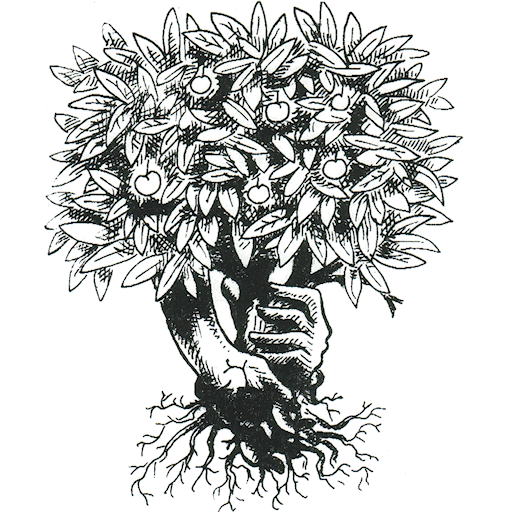By Eva Selhub and Alan Logan

This is an important and exciting book in my view, as it gives extensive research validation for the natural happiness approach, and the aims of Hazel Hill Wood as a natural learning centre. This will be a longer blog than most, because I’d like to highlight the main insights from the book.
This book was first published in 2012, and could not have been written even ten years earlier. It’s only very recently that research is emerging about the effects on our brains and bodies of the much longer time many people spend in screen world – smartphones, computers, televisions etc.
Good research on the benefits of time in nature is also surprisingly recent. The authors are both doctors, who teach at Harvard Medical School, so their views have some authority.
Your Brain on Nature offers extensive research support for the many benefits of time in nature, including stress reduction, physical health and creativity. Forests are a particularly positive natural setting, and the book quotes research from Japan on the benefits of Shinrin Yoku, or forest bathing.
One of the biggest new stresses most people face is massively increased info consumption via screens. This is happening both in the workplace and in leisure time. Americans now consume about 12 hours of information per day from screen sources, and since 1980, info consumption which is not work-related has increased 350%. Their exposition of the problems this is causing is fascinating and disturbing.
In effect, most people are now living pretty continually with information overload, and physiological over-stimulation. They point out that heavy internet users score low on emotional intelligence, and that general levels of empathic concern have halved in the past 30 years. This links to greater self-absorption: “Recent studies have documented significant increases in narcissism among young adults, with 89% more students answering almost all personality questions in a narcissistic direction in 2009 compared with 1994. Users with the highest scores on narcissistic personality tests are the most frequent daily visitors to Facebook.”
Directed Attention Fatigue describes the mental fatigue and stress which arise from a sustained effort of giving our attention to a task or situation. Now imagine how often your attention is distracted by new information from text messages, emails and so on. The problems of DAF have got far worse in recent years. One antidote to this is more experiences of involuntary attention where there is a degree of fascination in the situation, which is just what nature can provide.
If you suspected that screen world is addictive, this book confirms it: “We are wired to crave information – big time… The brain… uses dopamine to reward information seeking.” However, the major good news of this book is that nature contact is an effective antidote to the problems arising from screen world.
Research shows that a key aspect of nature experiences is that they have “intrinsic fascination”, hence they are an effective counterbalance to many modern stresses. Time in nature actually induces positive feelings, which can outweigh stress and anxiety.
Chapter 7 explores some specific kinds of nature exposure. Horticultural therapy, and gardening in general, can help wellbeing, motivation, self-esteem, and depression. Gardens in schools have clear benefits on learning ability, social skills and practical problem solving. Longer nature immersion programmes, like wilderness treks, can clearly have deep benefits, especially if they are combined with mindfulness or similar methods.
One of the fascinating parts of this book is its exploration of ‘synthetic nature’. It’s clear that man-made devices like ionisers, digital images of nature, and recordings of birdsong do have health benefits, but substantially less than the real world of nature. The authors paint a poignant picture of a society where increasing numbers of people don’t have real experiences with nature, and think that synthetic nature is all there is to it. It is hard for these people to realise and feel for what is being lost in human degradation of the natural world. Many thinkers, such as Thomas Berry, believe that deep empathy with nature is the best way to get human behaviour to change and nourish the planet and this book supports that view.
It’s also clear that the ways nature is presented in screen world are not helping: “A study… indicates that the highly selective presentation of nature scenes by the commercial media and simulated nature experiences involving scenes highly rated for beauty… cause a decline in support for the… preservation of local natural areas. Google media content is shaping… children’s brains with a bias toward the exotic animals (the giant panda, for instance) and away from the more important aspects of local biodiversity.”
This is an important, helpful, practical book. Buy it for yourself, give it to your friends for Christmas!
